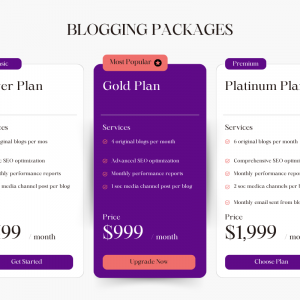In today’s fast-paced world, supporting local small businesses is more crucial than ever. The backbone of our communities, they provide unique products, personalized service, and economic growth.
According to the U.S. Small Business Administration, small businesses account for 44% of U.S. economic activity. Despite their importance, these enterprises face stiff competition from larger corporations and online retailers. This blog explores ten effective strategies to support and boost visibility for local small businesses. Whether you are an entrepreneur, a resident, or a community leader, these strategies can help ensure the continued success of your neighborhood’s small enterprises. Let’s ignite our commitment, innovate our approaches, and illuminate the path for local businesses.
1. Shop Locally and Encourage Others to Do the Same
One of the simplest yet most impactful ways to support local small businesses is to shop locally. By choosing to purchase goods and services from nearby stores, you directly contribute to the local economy. Encouraging friends and family to do the same amplifies this effect.
Implementation Tips:
- Host a ‘Shop Local’ Day: Organize community events that encourage residents to shop at local stores.
- Use Social Media: Share your purchases from local shops on social media platforms with hashtags like #ShopLocal.
Real-World Example:
A small town in Vermont saw a 20% increase in local business revenue after the community organized a monthly ‘Shop Local Saturday’ event, where businesses offered special discounts and hosted local musicians.
Example for Kissimmee, Florida:
In Kissimmee, Florida, residents can participate in the “Kissimmee Market Days,” where local vendors gather to showcase their products. By shopping at these events, residents not only support local artisans and farmers but also enjoy a vibrant community atmosphere with live music and food trucks.
2. Collaborate with Local Businesses
Encouraging partnerships between local businesses can lead to cross-promotion, shared resources, and a sense of community.
Implementation Tips:
- Joint Marketing Campaigns: Work with neighboring businesses to create joint promotions and events.
- Bundle Products or Services: Collaborate on bundled offerings that include products or services from multiple businesses.
Real-World Example:
In Portland, Oregon, a bookstore partnered with a local coffee shop to offer a “Books & Brews” package, which included a book and a bag of locally roasted coffee. This collaboration increased foot traffic for both businesses.
3. Leverage Social Media Platforms
In the digital age, social media is a powerful tool for increasing visibility. Platforms like Instagram, Facebook, and Twitter can help local businesses reach a wider audience.
Implementation Tips:
- Engagement Activities: Use polls, contests, and live videos to engage with followers.
- Local Hashtags: Employ local hashtags to connect with community members.
Real-World Example:
A small bakery in San Francisco gained 5,000 followers in six months by running weekly Instagram contests where participants shared photos of their favorite pastries using a local hashtag.
4. Host Local Events and Workshops
Hosting or sponsoring local events can draw attention to small businesses and foster a sense of community.
Implementation Tips:
- Workshops: Offer free or low-cost workshops related to your business.
- Community Events: Sponsor local festivals or charity events.
Real-World Example:
A local hardware store in Dallas hosted free weekend DIY workshops, leading to a 30% increase in customer visits over the following months.
5. Implement a Customer Loyalty Program
Rewarding repeat customers can help retain business and encourage further spending.
Implementation Tips:
- Point Systems: Implement a point system where customers earn rewards for frequent purchases.
- Exclusive Offers: Provide special discounts or early access to new products.
Real-World Example:
A family-run restaurant in Chicago introduced a loyalty card program, which increased their returning customer base by 15% within a year.
6. Engage with Local Press
Getting coverage from local newspapers, radio, and TV can significantly boost a business’s profile.
Implementation Tips:
- Press Releases: Regularly send out press releases for new products, events, or milestones.
- Build Relationships: Develop relationships with local journalists and influencers.
Real-World Example:
A new yoga studio in Miami garnered local media attention by hosting a unique rooftop yoga event, which was featured in multiple local publications.
7. Offer Exceptional Customer Service
Providing exceptional customer service can differentiate a small business from larger competitors.
Implementation Tips:
- Personal Touch: Remember customers’ names and preferences to make them feel valued.
- Feedback Mechanisms: Implement feedback systems to continuously improve service.
Real-World Example:
A local pet store in Boston built a loyal customer base by offering personalized pet care advice and free pet grooming demonstrations.
8. Support Other Local Businesses
Supporting other local businesses can create a mutually beneficial ecosystem.
Implementation Tips:
- Buy Locally: Source products and services from other local businesses.
- Referrals: Refer customers to other local businesses when appropriate.
Real-World Example:
A florist in Seattle increased her business by collaborating with a local farm for fresh flowers and a bakery for special event catering, creating a network of referrals.
9. Utilize Traditional Advertising Methods
While digital marketing is essential, traditional advertising still holds value, especially for local audiences.
Implementation Tips:
- Print Ads: Place ads in local newspapers and magazines.
- Billboards and Posters: Use local billboards and community bulletin boards.
Real-World Example:
A clothing boutique in Denver saw a spike in sales after placing an eye-catching ad in the local newspaper, reaching readers who prefer traditional media.
10. Engage in Community Service
Participating in community service helps build goodwill and enhances a business’s reputation.
Implementation Tips:
- Volunteer: Organize staff volunteer days at local charities.
- Sponsor Local Causes: Support fundraising events or local initiatives.
Real-World Example:
A small coffee shop in Austin gained community respect and increased customer loyalty by sponsoring a local food bank and regularly donating a portion of their profits.
Conclusion
Supporting local small businesses is vital for vibrant and thriving communities. These businesses offer unique products, personalized services, and cultural significance that large corporations cannot replicate. By implementing these strategies, we can ensure their continued success and contribute to a stronger local economy. As we embrace our motto of “Ignite, Innovate, Illuminate,” let’s come together to light the way for local businesses, fostering a community where they can thrive.
How do you support local small businesses in your community? What initiatives have you found most effective? Share your experiences and ideas in the comments below! Together, we can make a difference and elevate our local communities.







